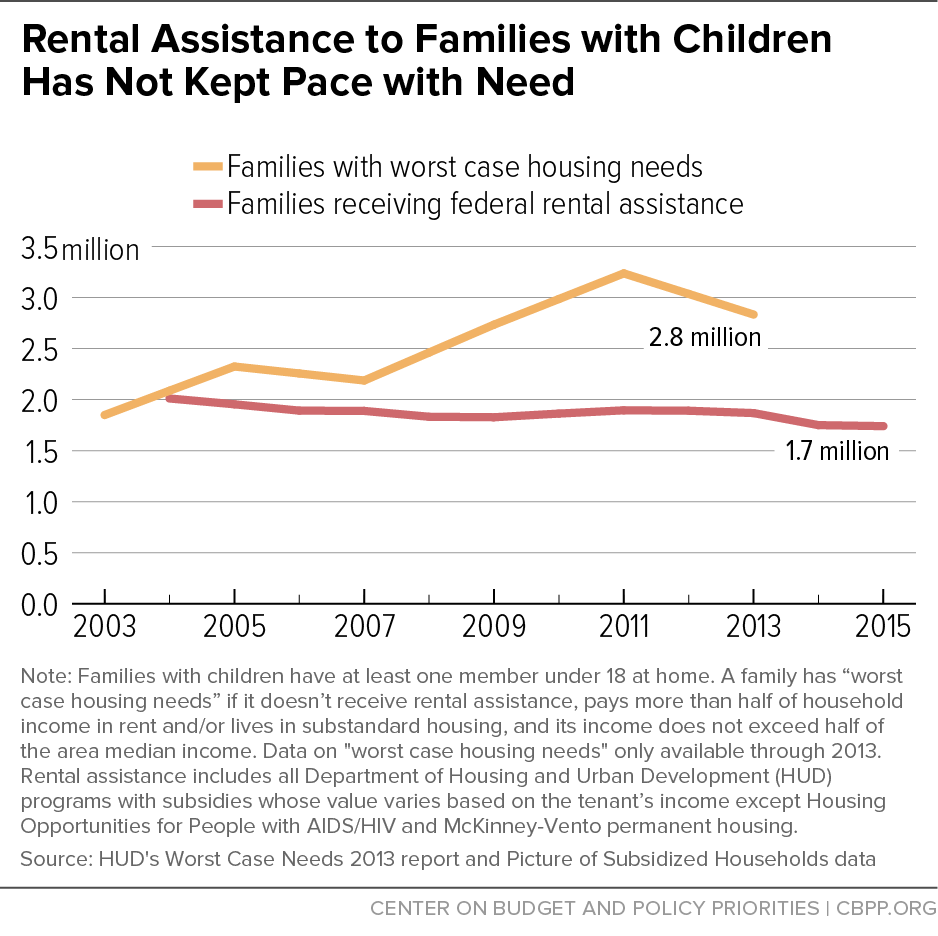BEYOND THE NUMBERS
With homelessness among families with children receiving more public attention, our new report shows that the number of families with children receiving federal rent subsidies has fallen by over 250,000 (13 percent) since 2004 and is at its lowest point in more than a decade, despite rising need. To enable low-income children to have a better chance to thrive, policymakers should substantially expand rental assistance.
Demand for rental housing has risen sharply in the last decade due to economic and demographic factors, and many families with children are getting squeezed financially as rents rise faster than incomes. The number of families with “worst case housing needs,” meaning they paid more than half their income for rent or lived in severely substandard housing, rose by 53 percent between 2003 and 2013, to nearly 3 million. Families with worst case needs typically have two children and are headed by a single woman or married couple with low-wage jobs that don’t pay enough to let them pay the rent and meet other basic needs.
Alarmingly, homelessness among school-age children is at a record high. During the 2013-2014 school year, 1.4 million school-age children were in families that lacked a home of their own — for instance, they were in a homeless shelter or doubled up with other families. Moreover, these figures omit preschool children, the age group for which the risk of homelessness is highest.
The persistence of family homelessness despite an improving economy is worrisome because housing instability is especially harmful for children’s health and school performance. Children who experience homelessness or frequent, involuntary family moves are likelier to develop cognitive, behavioral, and mental health problems, as well as physical health problems such as asthma. They’re also less likely to do well in school.
Unfortunately, the housing problems facing low-income renters with children likely won’t improve without more public investment in rental assistance. Public policy changes that boost family incomes are vital, but even with such measures, many more families will need help meeting their rental costs and providing stable homes for their children.
The 2017 funding bill for the Department of Housing and Urban Development that the Senate Appropriations Committee approved last week includes $20 million for roughly 2,500 new “family unification vouchers” for youth aging out of foster care and families with children under the care of child welfare agencies that need affordable housing. That’s a step in the right direction, but we’ll need to do much more. For example, policymakers should also meet the President’s request for $88 million to fund 10,000 new vouchers for homeless families.

